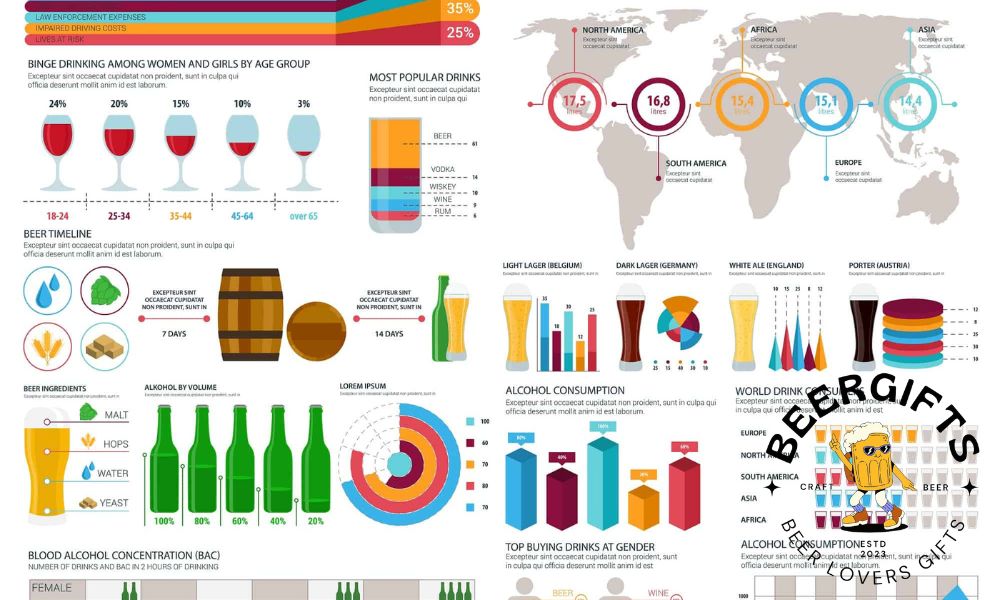Are craft beers really stronger than regular beers? Discover the surprising truth about how many it takes to get drunk.

Image courtesy of Anete Lusina via Pexels
Table of Contents
Have you ever wondered how many beers it takes to get drunk? The answer to this seemingly simple question is not so straightforward. Alcohol affects each individual differently based on various factors such as metabolism, tolerance levels, and external influences. Let’s dive deep into the science behind intoxication and explore the differences between craft and regular beers in reaching that tipsy state.
Understanding Alcohol Metabolism
When you consume alcohol, your body metabolizes it at a rate of about one standard drink per hour. This process varies from person to person due to factors like genetics, weight, and overall health. Individuals with higher metabolism rates may process alcohol more quickly, whereas those with slower metabolisms may feel the effects of alcohol more intensely.
When it comes to craft beers versus regular beers, the alcohol content can vary significantly. Craft beers often have higher alcohol by volume (ABV) percentages, meaning you may need to consume fewer craft beers to reach the same level of intoxication as you would with regular beers.
Individual Tolerance Levels
Alcohol tolerance plays a significant role in how many beers it takes for someone to get drunk. Tolerance can be influenced by genetic factors, drinking habits, and overall alcohol consumption over time. Some people may have a higher tolerance due to regular alcohol consumption, while others may feel tipsy after just one or two drinks.
It’s important to note that tolerance levels can change over time, so just because you could handle a certain number of beers in the past doesn’t mean you will have the same tolerance level in the future. Factors like hydration, food consumption, and emotional state can also impact how alcohol affects you.
Factors Influencing Intoxication
Several external factors can influence how quickly you become intoxicated after consuming alcohol. Eating a meal before drinking can slow down the absorption of alcohol in your system, whereas drinking on an empty stomach can lead to faster intoxication. Staying hydrated while drinking is also essential in reducing the risk of becoming drunk too quickly.

Image courtesy of via Google Images
Emotional state can also play a role in how alcohol affects you. If you’re feeling stressed, anxious, or upset, alcohol may have a stronger impact on your mood and behavior. It’s essential to be mindful of your emotional state when consuming alcohol and practice moderation to avoid any negative consequences.
Conclusion
So, how many beers does it take to get drunk? The answer varies for each individual based on their metabolism, tolerance levels, and external influences. Craft beers with higher ABV percentages may require fewer drinks to reach intoxication compared to regular beers. Understanding your own limits and being aware of the factors that influence intoxication can help you drink responsibly and avoid overconsumption.
Remember to always drink in moderation, know your limits, and prioritize your safety and well-being when consuming alcohol. Whether you prefer craft beers or regular beers, the key is to enjoy them responsibly and in a way that enhances your social experiences without compromising your health.
FAQ
Are craft beers stronger than regular beers?
Craft beers often have higher alcohol by volume (ABV) percentages, making them potentially stronger than regular beers. Consuming fewer craft beers may lead to reaching intoxication faster compared to regular beers.
How does alcohol tolerance affect intoxication levels?
Alcohol tolerance can influence how many beers it takes for someone to get drunk. Higher tolerance levels, often due to regular alcohol consumption, may require more drinks to reach intoxication, while those with lower tolerance may feel the effects sooner.
What factors influence how quickly someone becomes intoxicated?
Several factors can impact intoxication levels, including metabolism, tolerance, food consumption, hydration, emotional state, and overall health. Eating before drinking, staying hydrated, and being mindful of emotional well-being can all play a role in how alcohol affects the body.
How can I drink responsibly and avoid overconsumption?
To drink responsibly and avoid overconsumption, it’s essential to know your limits, understand the factors that influence intoxication, stay hydrated, eat before drinking, monitor emotional well-being, and prioritize your safety and well-being. Practicing moderation and being mindful of your alcohol consumption are keys to responsible drinking.
Generated by Texta.ai Blog Automation
Leave a Reply